
Euonymus alatus (Winged Burningbush) Minnesota Wildflowers
Control Mechanical: Hand-pull seedlings. Use a spading fork or weed wrench to remove larger plants and their root systems. Larger plants can be cut, but the stump must be ground out or regrowth frequently monitored and clipped. This species can re-sprout after cutting and top-kill herbicides.

EUONYMUS alatus Fusain ailé pépinières Lepage Bretagne Bord de mer Fusain ailé, Fusain
Euonymus alatus (E. alatus) is a medicinal plant used in some Asian countries for treating various conditions including cancer, hyperglycemia, and diabetic complications. This review outlines the phytochemistry and bioactivities of E. alatus related to antidiabetic actions. More than 100 chemical constituents have been isolated and identified from E. alatus, including flavonoids, terpenoids.

Euonymus alatus fruit hires stock photography and images Alamy
Burningbush is a rounded shrub that grows to 8.2 feet (2.5 m) tall [ ]. The branches typically have prominent, corky wings [ ], although stem wings are reduced to ridges or absent on some plants [ ]. Burningbush is deciduous [ ], with opposite leaves [ ]. The inflorescence is a long-peduncled cyme with ].
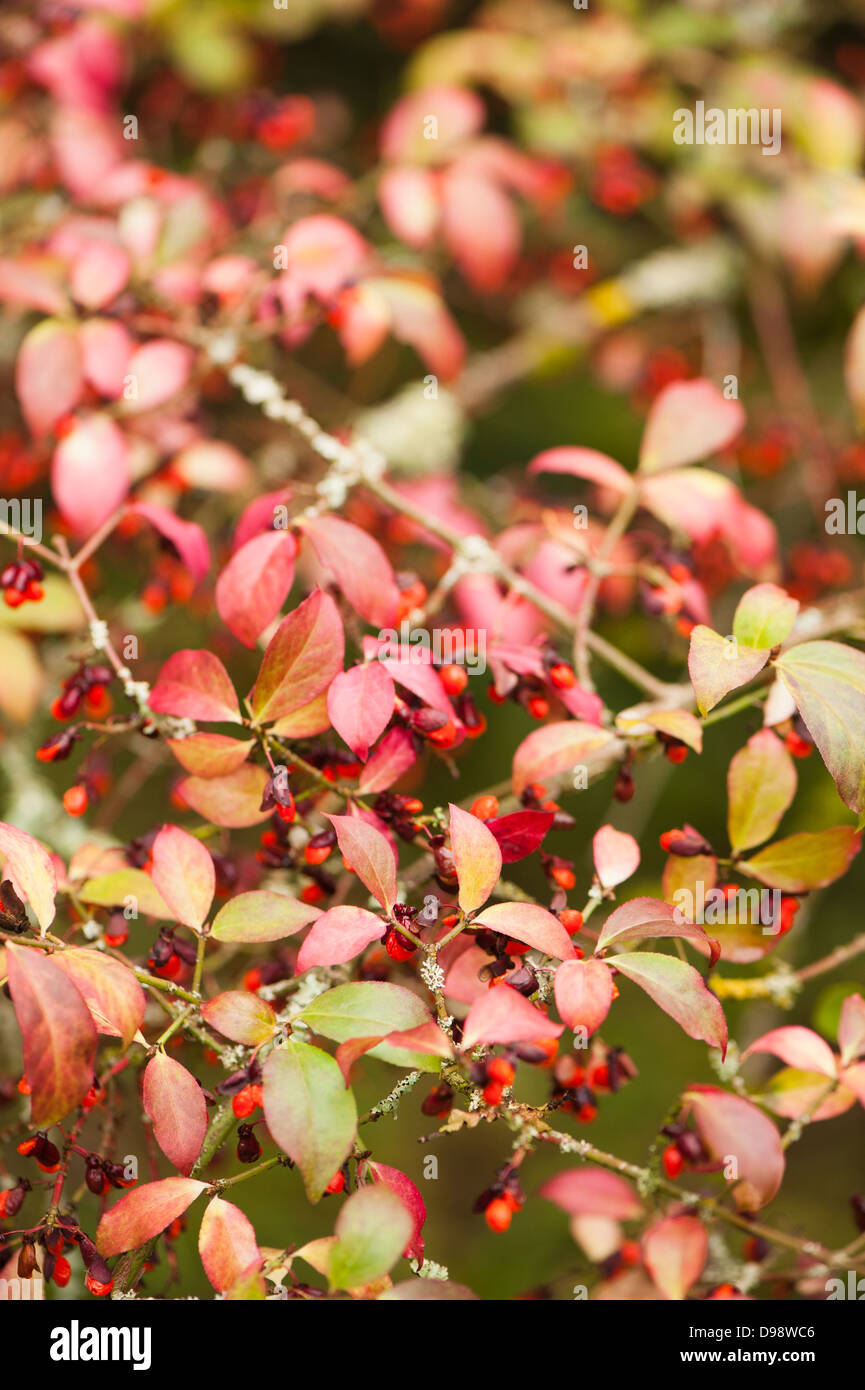
Euonymus alatus spindle fruit hires stock photography and images Alamy
Euonymus alatus, commonly called winged euonymus, burning bush, winged burning bush or winged spindle tree, is a dense, mounded, spreading, flat-topped, multi-stemmed shrub that is particularly noted for its fiery red fall foliage color. It is native to forests, woodlands and scrub areas in eastern Russia, Japan, China and Korea.
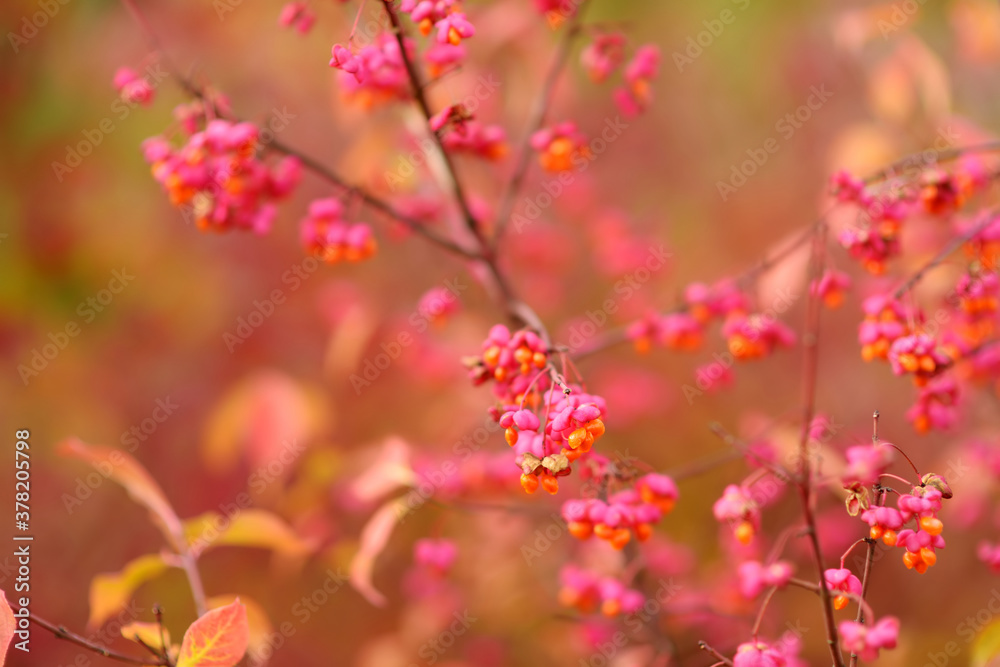
Bright red fruits of euonymus alatus. Winged spindle, winged euonymus or burning bush. Beautiful
Some notable varieties: 'Aureomarginatus,' which has green leaves and thick golden-yellow margins, and 'Microphyllus,' a compact and small-leaved cultivar that looks like a Euonymus - Buxus lovechild. 'Aureomarginatus'. 'Aureomarginatus' is offered by Fast Growing Trees in three-gallon containers. 9.

Beautiful Autumn Background with a Sprig of Spindles Euonymus Europaeus .Fruits of Euonymus
Euonymus alatus, known variously as winged spindle, winged euonymus, or burning bush, is a species of flowering plant in the family Celastraceae, native to central and northern China, Japan, and Korea. The common name "burning bush" refers to its bright red fall color.
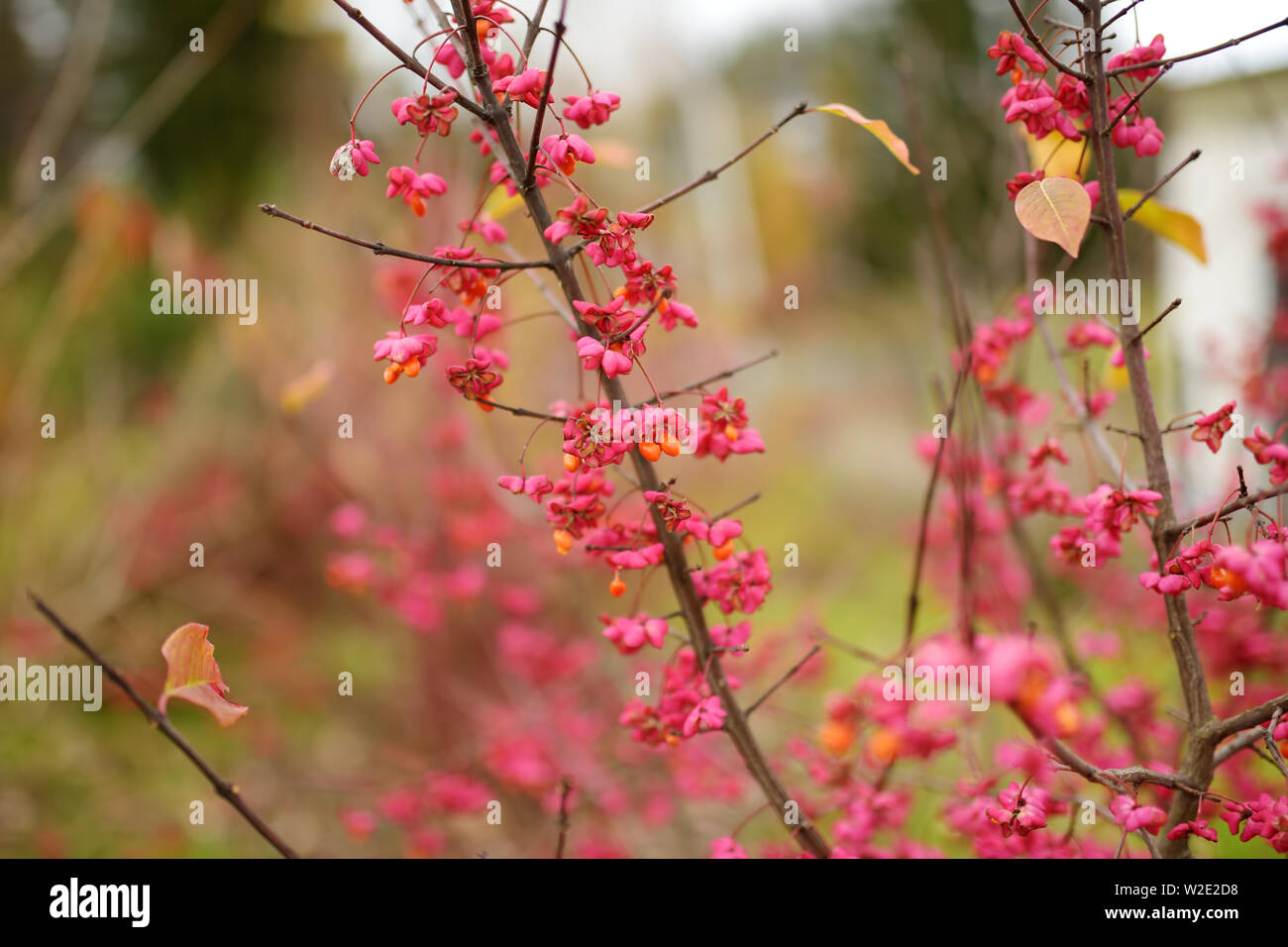
Bright red fruits of euonymus alatus. Winged spindle, winged euonymus or burning bush. Beautiful
Euonymus alatus (Burning Bush) Burning Bush, Winged Spindle Tree, Winged Euonymus, Winged Burning Bush Noted for its fluorescent fall foliage and very ornamental berries, Euonymus alatus (Burning Bush) is a large, spreading, deciduous shrub of great popularity.

Euonymus alatus Fusain ailé Van den Berk Pépinières
This plant is an invasive species in North Carolina Description This plant is problematic and alternatives should be considered. Please see the suggestions in the left-hand column. Burning bush is a weedy species of deciduous shrub, single or multi-stemmed, that is drought tolerant and provides stunning red fall color.
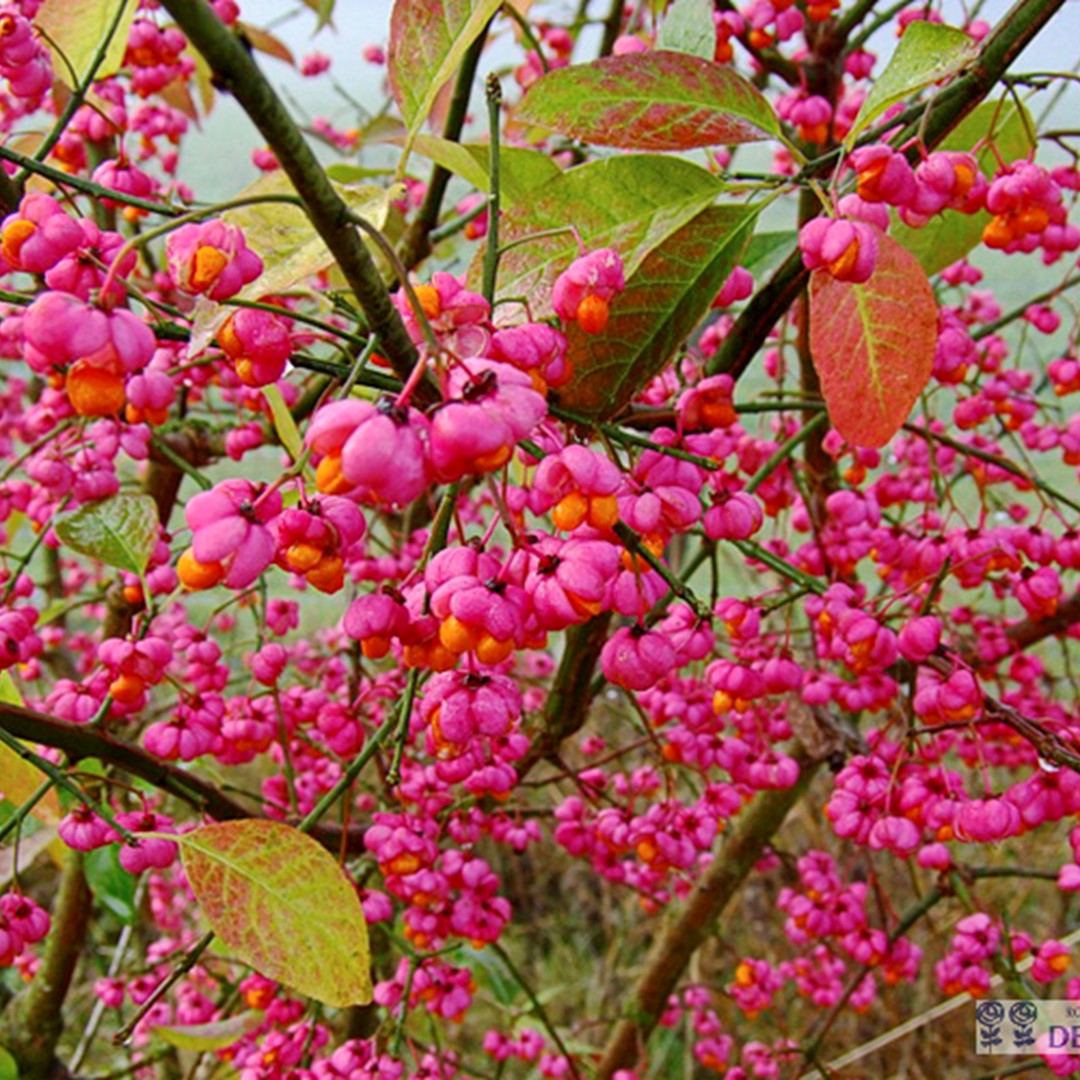
Euonymus alatus kardinaalshoed
Euonymus, or Spindletree, is a genus of deciduous or evergreen flowering shrubs containing about 140 species and several cultivars. Native to East Asia, species are widely distributed in Canada and the continental United States. In nature, it is often found in mixed deciduous forests or natural areas in low woodlands.

Euonymus Alatus
Burning bush was first imported to the U. S. in 1860 as a popular ornamental shrub, and is now found everywhere along roadsides, forests edges, and fields. It is considered an invasive species. Birds eat the red fruits and hasten its dispersal around the landscape. Habitat

Euonymus alatus. Stock Image B808/0868 Science Photo Library
The fruit which appears from September to October are reddish capsules that split to reveal orange fleshy seeds. Ecological Threat Euonymus alatus can invade not only a variety of disturbed habitats including forest edges, old fields, and roadsides but also in undisturbed forests. Birds and other wildlife eat and disperse the fruit..

winged burning bush, Euonymus alatus (Celastrales Celastraceae) 0016052
Euonymus alatus eventually escaped cultivation and was acknowledged to be invasive in the 20th century, mostly in the Northeastern U.S. It now occurs in at least 25 states, as far west as Montana, and as far north as Ontario, Canada.. Some possible native alternatives to Euonymus alatus, which provide fruit and fall color,.

Euonymus alatus Winged Euonymus, Dwarfwinged burning bush) North
Burning bush ( Euonymus alatus ), or "winged euonymus," is an extremely popular landscape shrub, even after its invasive habit became known. Originally introduced from Asia in the mid-1800s, its ability to invade natural areas was first documented in the 1970s.

Euonymus alatus (Celastraceae) image 18472 at PhytoImages.siu.edu
Euonymus alatus is a deciduous shrub, up to 20 ft. (6.1 m) in height, which invades forests throughout the eastern United States. Two to four corky ridges often form along the length of young stems, though they may not appear in shaded areas or closed canopies. Foliage
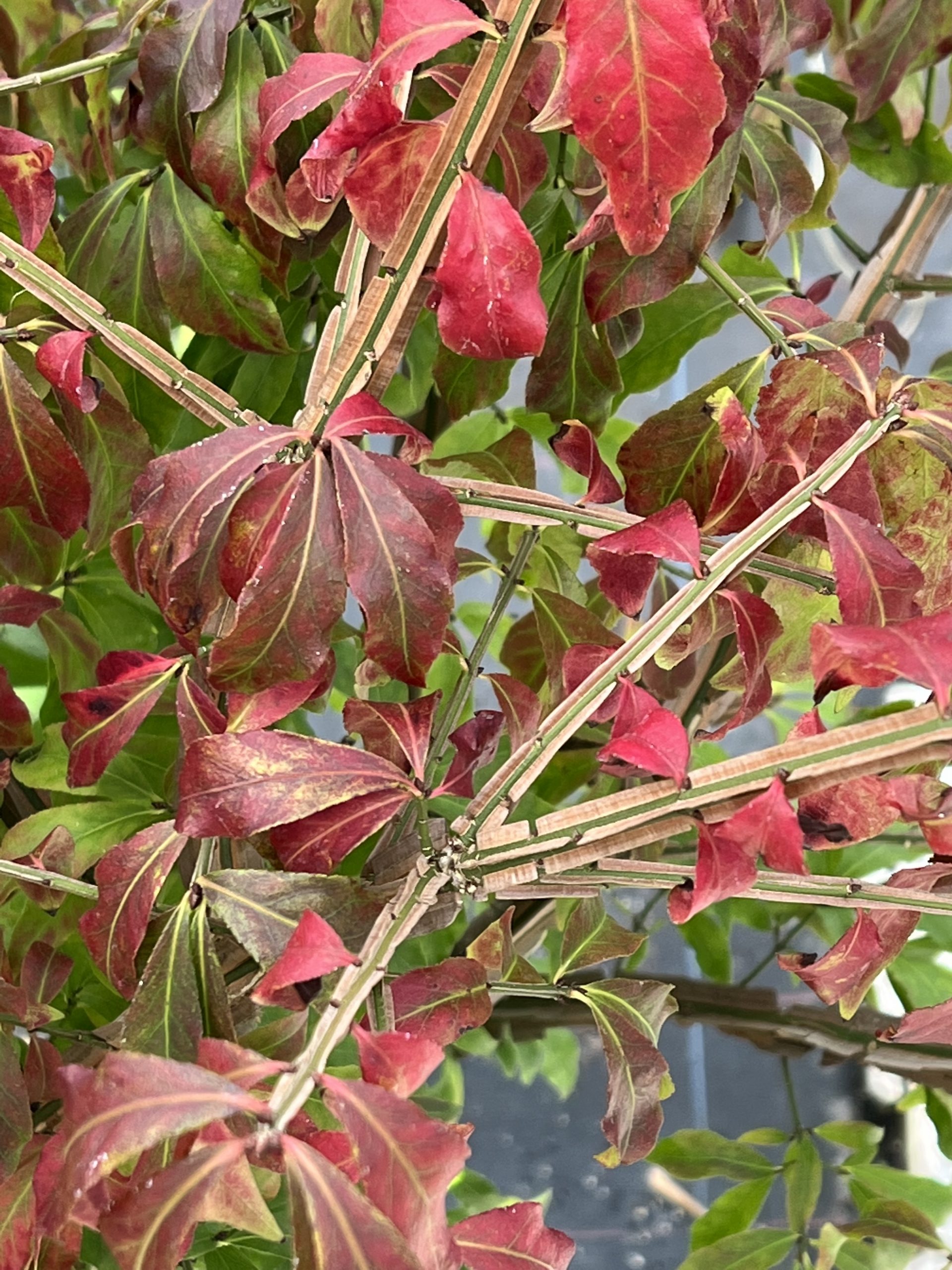
Euonymus alatus Shop Established Euonymus Proctors Nursery
Euonymus alatus is commonly known as burning bush because of its almost neon-red fall color. While this quality—combined with its low maintenance—has made the shrub an ornamental staple in suburban landscaping, it has also become far too common in the woodlands of the eastern United States, where it is recognized as an invasive species in 21 states.

Fire Ball® Burning Bush Euonymus alatus Euonymus alatus, Burning bush, Peach tree diseases
Euonymus alatus (Winged Burning-bush) Plant Info; Also known as: Winged Euonymus, Winged Spindle-tree: Genus: Euonymus: Family: Celastraceae (Staff-tree) Life cycle: perennial woody: Origin:. Fruit is a capsule about ½ inch across, initially green, turning pinkish and maturing to red, typically 4-lobed but not all lobes may develop. When.